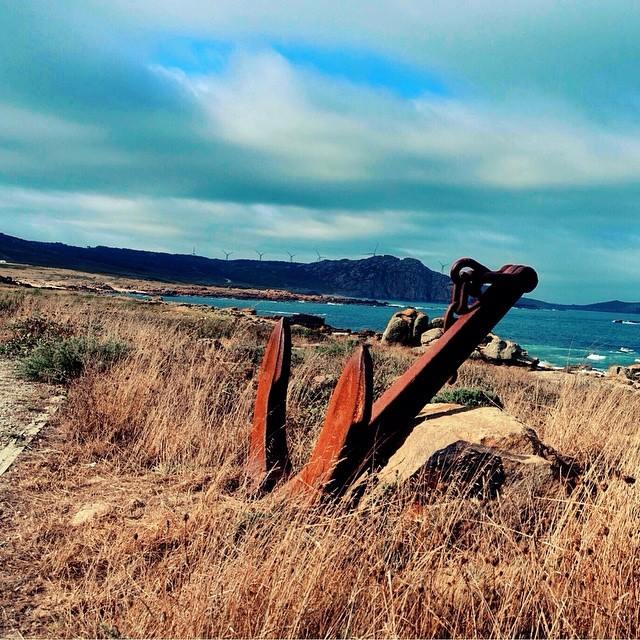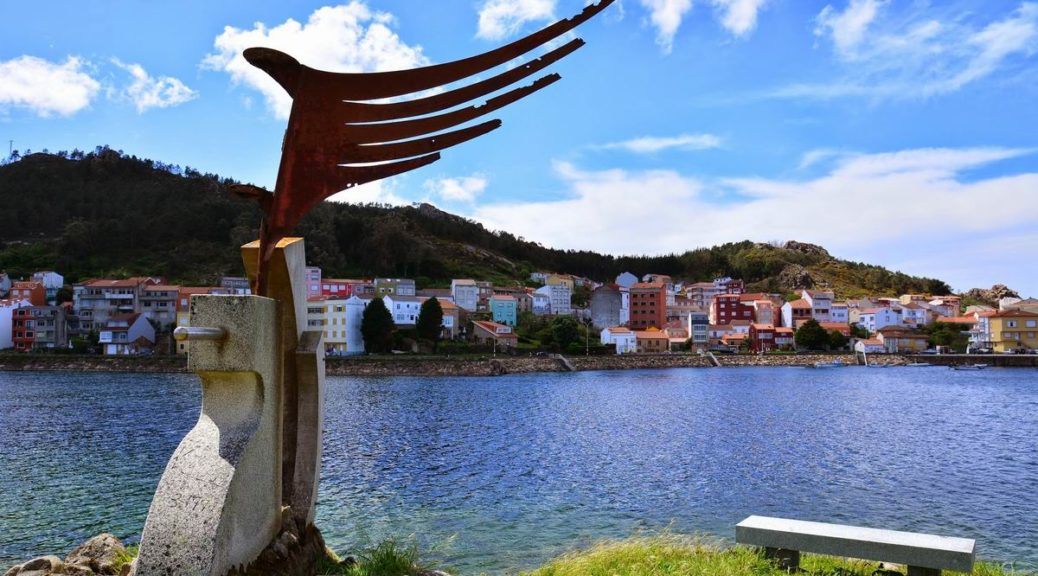Caminata solitaria con oportunidad para la reflexión, observación de aves y paseos por la playa. O Camiño dos Faros ofrece a los viajeros la oportunidad de caminar por playas solitarias.
Aunque no es una ruta de peregrinos de más de 1.000 años, O Camiño dos Faros (Camino de los Faros) de 125 millas en Galicia ofrece más oportunidades para la meditación consciente. En la mayoría de los días, conocerás a pocos senderistas, si es que los hay, lo que te permitirá estar atento a los suaves sonidos que te rodean: brisas que azotan las ramas de pino, pájaros parloteando, el mar estrellándose en la costa rocosa y el rítmico tap-tap de tus bastones.
Este camino contemporáneo fue desarrollado por un grupo de gallegos en 2013 para mostrar la belleza natural de la Costa da Morte (Costa de la Muerte), llamada así por los múltiples naufragios que ocurrieron en alta mar.

La ruta sigue una mezcla de estrechos caminos de cabras, caminos de tierra dejados por los agricultores, senderos junto a la playa y el bosque, y la ocasional carretera de asfalto tranquila. La escarpada Costa da Morte permanece sin desarrollar, con una serie de faros, como Cabo Vilan, que coronan promontorios azotados por el viento que se adentran en los mares tumultuosos.
Rodeado de acantilados, este camino se adentra en densos bosques con olor a pino y eucalipto, y se desplaza sobre un paisaje ondulado cubierto de rocas cubiertas de deslumbrantes flores silvestres. Hay numerosas oportunidades para espiar garzas blancas, martines pescadores comunes y otras especies, y visitar los desiertos arenosos arrastrados por las olas.
Pase la noche en Camelle, uno de los muchos pueblos costeros y tranquilos, y cene en el Café Bar Paella, donde se mezclará con los pescadores de habla gallega, uno de los cuales podría haber pescado su cena. No se pierda los percebes, las centollas, los berberechos, las navajas y otros mariscos frescos en el menú del Hotel Puerto Arnela en Camarinas, donde los pequeños barcos de pesca anclan en el puerto. Brindar por los locales con una refrescante copa de vino blanco gallego en Taberna do Bico.

A medida que se acerca al pueblo de Finisterre («Fin de la Tierra»), la ruta se solapa brevemente con el Camino de Santiago. Muchos peregrinos que te encuentres se preguntarán por qué elegiste un camino tan poco conocido, en lugar del Camino.
Sonreirás, atesorando cada momento la humilde tranquilidad de esta ruta.
Jeanine Barone Barone es un escritor residente en Nueva York.
Su sitio web es jthetravelauthority.com.
The Washington Post es el mayor y más antiguo periódico de Washington D. C., la capital de los Estados Unidos. Es generalmente considerado uno de los mejores diarios estadounidenses, junto con el New York Times, conocido por su reportaje general y cobertura internacional, y el Wall Street Journal, famoso en el área financiera.
More than a thousand years of history, and tens of thousands of pilgrims

One of the hundreds of thousands of pilgrims annually who follow the Camino de Santiago. (Miguel Riopa/AFP/Getty Images)
For more than a millennium, the Camino de Santiago (the Way of St. James) has attracted pilgrims, many seeking self-reflection and spiritual insight as they journey hundreds of miles to Santiago de Compostela in Galicia, Spain. While they follow myriad routes of varying lengths — the Camino is really a network of caminos, or paths — most pilgrims have the same destination: Santiago’s grand Romanesque cathedral, where the apostle James is believed to be buried. Increasingly popular, this epic pilgrimage attracted more than 320,000 people in 2018, with most of them tackling all or part of the almost 500-mile French Way (Camino Frances).
But despite its popularity, the Camino Frances isn’t uniformly picturesque. Most of the age-old trail meanders through unremarkable farmland or beside busy paved roads or even heavily trafficked highways. Souvenir stands and other pilgrim-related commercial activities pepper the route. Iconic landmarks, including Santiago’s cathedral, teem with tourists. There’s no lack of camaraderie — but that’s not necessarily conducive to spiritual reflection. If you would rather not be elbow-to-elbow with fellow pilgrims, you’ll find thinner crowds in the offseason (especially winter).
Location: St. Jean-Pied-de-Port, France, to Santiago de Compostela in Galicia, Spain. santiagoturismo.com/camino-de-santiago
Solitary trek with opportunity for reflection, birdwatching and beachgoing

The Camino dos Faros offers travelers the chance to walk along empty beaches. (Jeanine Barone/For The Washington Post)
Although it isn’t a 1,000-plus-year-old pilgrim route, the 125-mile Camino dos Faros (Lighthouse Way) in Galicia provides more opportunity for mindful meditation. On most days, you’ll meet few, if any, fellow hikers, allowing you to be attentive to the gentle sounds around you: breezes whipping through pine boughs, birds chattering, tides crashing on the rocky shore and the rhythmic tap-tap-tap of your walking sticks. This contemporary camino was developed by a group of Galicians in 2013 to showcase the natural beauty of the Costa da Morte (Death Coast), so named for the copious shipwrecks that happened offshore. The route follows a mix of slim goat and sheep paths, dirt tracks left by farmers, forest and beachside trails, and the occasional quiet asphalt road. The rugged Costa da Morte remains delightfully undeveloped, with a string of lighthouses, such as Cabo Vilan, crowning windswept promontories that jut into the tumultuous seas.
Serenely skirting barren cliffs, this camino wanders into dense forests redolent with pine and eucalyptus, and rolls across an undulating boulder-strewn landscape coated with dazzling wildflowers. There are numerous opportunities to spy white egrets, common kingfishers and other species, and visit desolate sandy stretches washed by tumbling waves. Spend the night in Camelle, one of many sleepy seaside villages, and dine at Cafe Bar Paella — where you’ll mingle with Galician-speaking fishermen, one of whom might have caught your dinner. Don’t miss the barnacles, spider crabs, cockles, razor clams and other fresh seafood on the menu at Hotel Puerto Arnela in Camarinas, where petite fishing boats anchor in the harbor. Toast locals with a refreshing glass of Galician white wine at Taberna do Bico.
As you draw closer to the town of Finisterre (“Land’s End”), the route briefly overlaps with the Camino de Santiago. Many pilgrims you encounter will wonder why you chose such a little-known camino, rather than the Camino. You’ll smile, treasuring every moment of this route’s humble tranquility.
Location: From Malpica to Finisterre, in Spain. caminodosfaros.com

